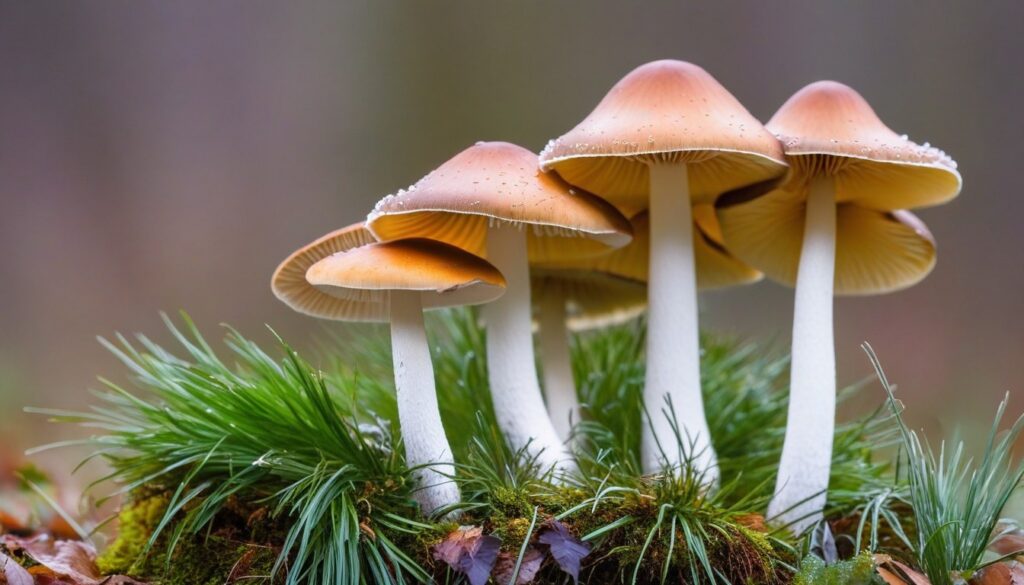Welcome to our comprehensive winter foraging guide, where we explore the fascinating world of cold weather mushrooms. Just because the temperatures have dropped, it doesn’t mean that you have to abandon your mushroom foraging hobby. In fact, winter presents a unique opportunity to find a whole new variety of mushrooms that thrive in the cold weather. Join us on this journey to discover the secrets of finding these elusive fungi even in the chilly winter months.
Key Takeaways:
- Cold weather mushrooms can be found and harvested during the winter months.
- Winter foraging offers different opportunities and challenges compared to foraging during warmer months.
- With appropriate gear and knowledge of foraging, mushroom hunting during winter can be a fun and rewarding activity.
- Cold weather mushrooms have unique flavors and textures, and some even have potential medicinal benefits.
- Our guide covers everything from identifying edible mushrooms to preserving and storing them for future use.
Why Winter Foraging?
Winter foraging may seem like an unlikely activity, but it offers a unique and thrilling experience for mushroom hunters. The chilly temperatures of winter actually increase the chances of finding rare and exceptional varieties of cold weather mushrooms. These mushrooms have adapted to the cold and are often found in areas with snow, frost, or damp soil.
Foraging in the winter also has its benefits. The cold weather keeps insects and other foragers at bay, meaning more mushrooms for the skilled explorer. It also provides an opportunity to get out into nature during a season where many activities are limited.
But perhaps the most alluring aspect of winter foraging is the incredible flavors and textures of the cold weather mushrooms. Discovering a new species and preparing it into a delicious meal becomes a culinary adventure that warms the soul.
Benefits of Winter Foraging
|
Benefits |
Description |
|---|---|
|
Avoid Crowds |
The cold weather keeps many mushroom hunters at home, meaning less competition. |
|
Unique Species |
Prolonged cold weather allows for the growth of unique mushroom varieties adapted to the cold. |
|
Health Benefits |
Cold weather mushrooms are known to have immune-boosting and antioxidant properties. |
|
Winter foraging provides an opportunity to discover new and flavorful mushrooms and experiment with new recipes. |
So, bundle up and head out into the winter wonderland to discover the hidden secrets of cold weather mushrooms.
Common Cold Weather Mushroom Species
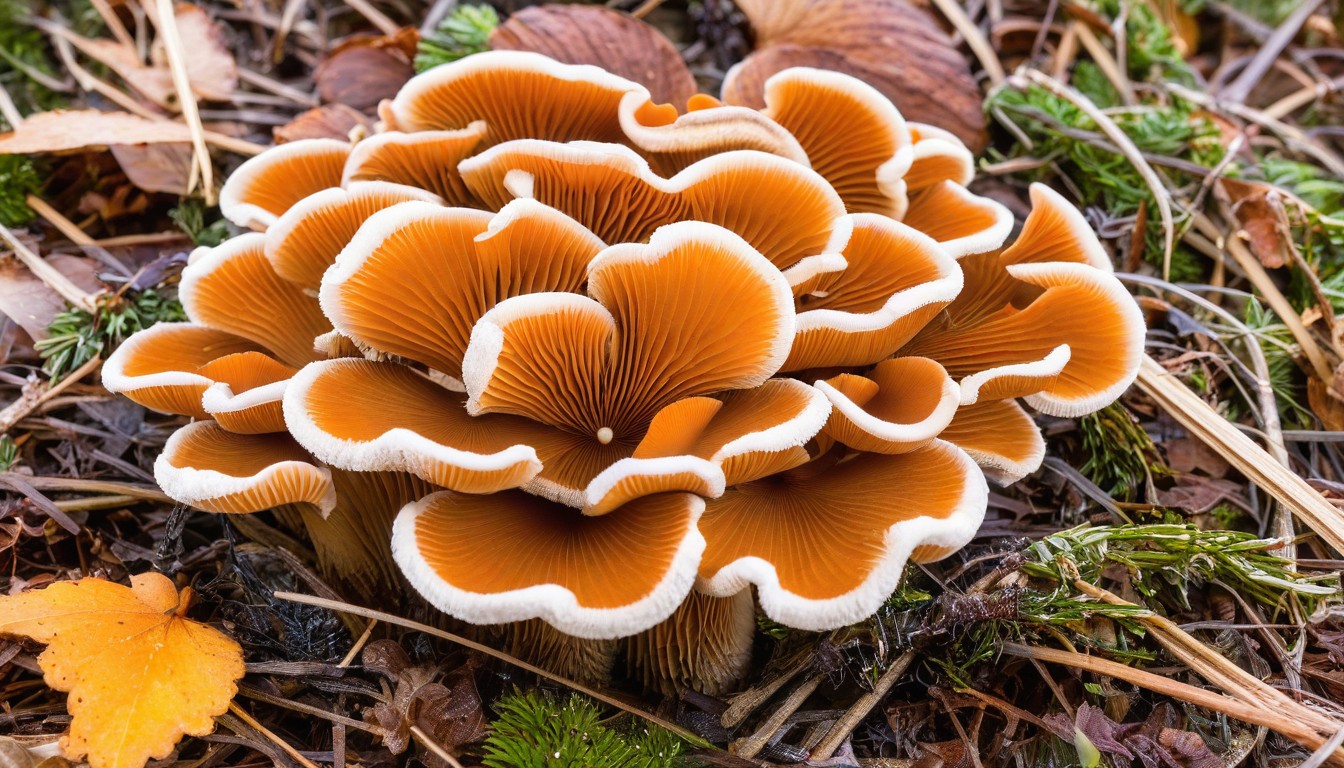
Foraging for cold weather mushrooms can be a thrilling experience, but it is essential to know which mushrooms are safe to eat and which should be avoided. Here are some of the most common cold weather mushroom species:
|
Mushroom Name |
Distinct Characteristics |
|---|---|
|
Amanita muscaria |
Red and white cap with white gills; large, bulbous stem with white warts |
|
Pleurotus ostreatus |
Oyster-shaped cap with white to grayish gills; short, thick stem |
|
Coprinus comatus |
Elongated, bell-shaped cap with white gills; tall, slender stem |
|
Morchella esculenta |
Distinctly cone-shaped cap with distinctive honeycomb texture; slender, hollow stem |
|
Hydnum repandum |
Fan-shaped, spiky cap with spikes on its underside instead of gills; short, thick stem |
Ensure you identify mushroom species correctly before consumption. Mushroom identification can be difficult, so if you are unsure, do not eat them!
Mushroom Habitat and Growing Conditions in Winter
Did you know that cold weather mushrooms have specific habitat and growing conditions that they prefer? Understanding these preferences can help you locate these elusive fungi even in the dead of winter.
Habitat Types
|
Mushroom Species |
Preferred Habitat Types |
|---|---|
|
Lion’s Mane |
Deciduous trees, dead logs, and stumps |
|
Black Trumpet |
Mossy areas, leaf litter, and under coniferous trees |
|
Oyster Mushroom |
Dead hardwood trees, logs, and stumps |
Mushrooms that grow in cold weather tend to prefer specific habitats, so keep an eye out for them in these locations.
Growing Conditions
Cold weather mushrooms thrive in moist environments, so areas with higher humidity levels are ideal. Additionally, these fungi can be found in areas with a steady supply of decaying organic matter, such as in compost piles or on the forest floor.
You can also create optimal growing conditions for cold weather mushrooms in your own backyard. One method is to create a mushroom bed by layering wood chips, straw, and mushroom spawn. This can be covered with a layer of straw and left to ferment, providing the ideal environment for mushrooms to flourish.
By understanding mushroom habitat and growing conditions in winter, you can increase your chances of finding these delectable fungi even in the coldest of months.
Winter Foraging Tools and Gear
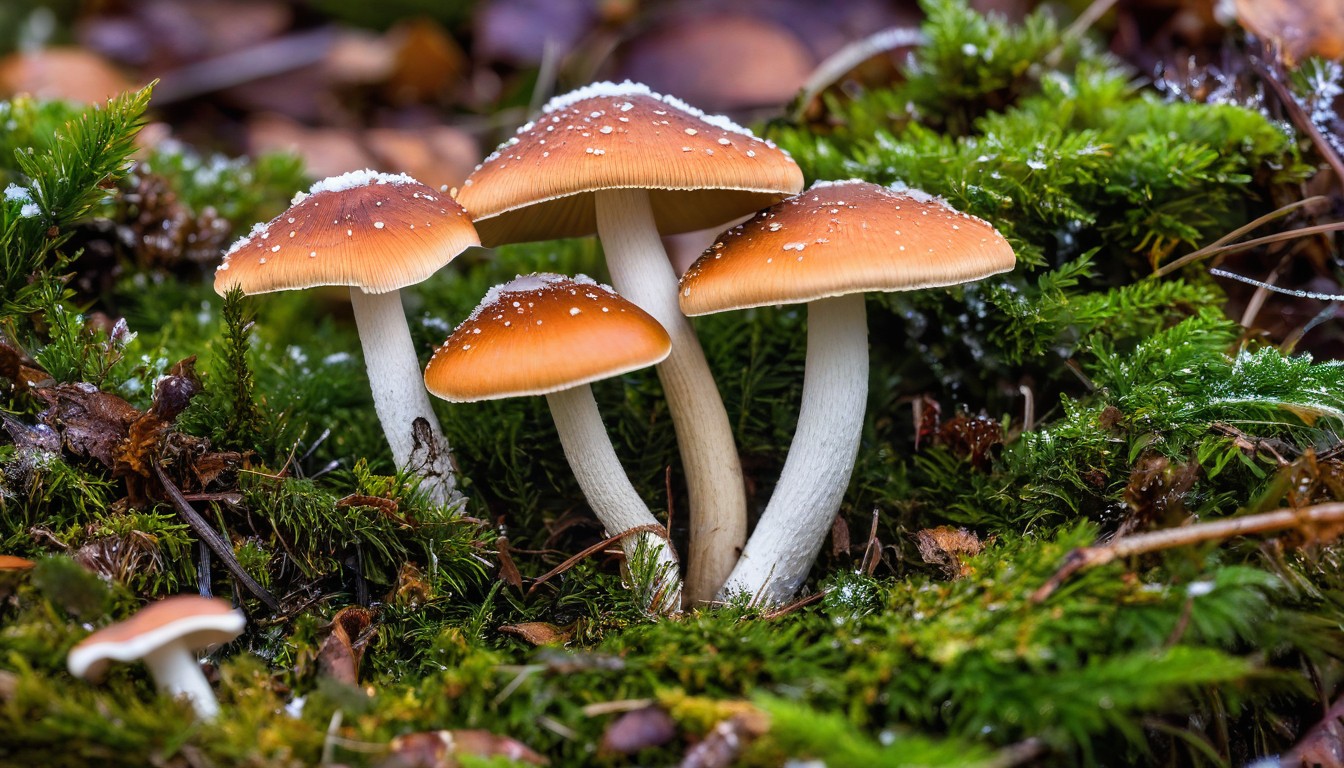
Winter mushroom foraging can be a chilly and challenging experience, but with the right tools and gear, it can also be a rewarding and enjoyable one. Here are some essential items to consider when planning your next winter foraging adventure:
|
Item |
Description |
|---|---|
|
Clothing |
Dress in warm layers that wick away moisture, such as wool or synthetic materials. Avoid cotton as it retains moisture and can facilitate hypothermia. Wear waterproof boots with good traction, gloves, and a hat to keep the extremities warm. |
|
Foraging Basket |
A sturdy basket with straps or handles to hold the mushroom harvest. Choose baskets with good ventilation to prevent moisture buildup. |
|
Mushroom Knife |
A specialized knife with a curved blade and brush for easy mushroom harvesting. The brush can be used to remove debris and dirt from the harvest. |
|
Navigation Tools |
Maps, compasses, and GPS devices are important for navigating the winter terrain. Ensure that they are fully charged and packed along with extra batteries. |
|
Survival Kit |
A compact kit that includes a whistle, matches, fire starter, first aid supplies, and high-energy snacks. It’s always better to be prepared for any unforeseen circumstances. |
When selecting gear, it’s important to consider your comfort, safety, and sustainability. Stay warm, stay safe, and enjoy the unique experience of foraging for mushrooms in the wintertime.
Safety Precautions for Mushroom Foraging in Winter
Mushroom foraging in winter can be a rewarding and exciting experience, but it’s important to remain mindful of potential safety hazards. Here are some important safety precautions to keep in mind:
1. Dress Appropriately
When foraging in the winter, it’s important to dress warmly and wear appropriate footwear. Dress in layers to stay warm, but make sure your clothing is breathable to prevent overheating. Wear waterproof boots with good traction to prevent slips and falls.
2. Bring the Right Gear
To ensure a safe and successful winter foraging experience, it’s important to bring the right gear. Some essential items to bring include a map and compass, a first aid kit, a whistle, a flashlight, and a cell phone.
3. Identify Mushrooms Accurately
One of the most important safety precautions to follow when mushroom foraging is accurately identifying the mushrooms you find. Before consuming any mushroom, make sure you have accurately identified it and confirmed that it is safe to eat. Take a mushroom identification course or bring a guidebook to help you.
4. Avoid Toxic Mushrooms
While it’s important to accurately identify edible mushrooms, it’s equally important to avoid toxic varieties. Some mushrooms can be highly toxic and cause serious illness or even death. If you are uncertain about the identification of a mushroom, err on the side of caution and leave it behind.
5. Respect Nature and Private Property
Please respect the environment and the private property of others when foraging. Only forage in areas where it is legal to do so, and don’t damage the environment or disturb wildlife. Leave the area better than you found it.
“Remember to follow these safety precautions to ensure a safe and enjoyable winter foraging experience”
Identifying Edible Cold Weather Mushrooms
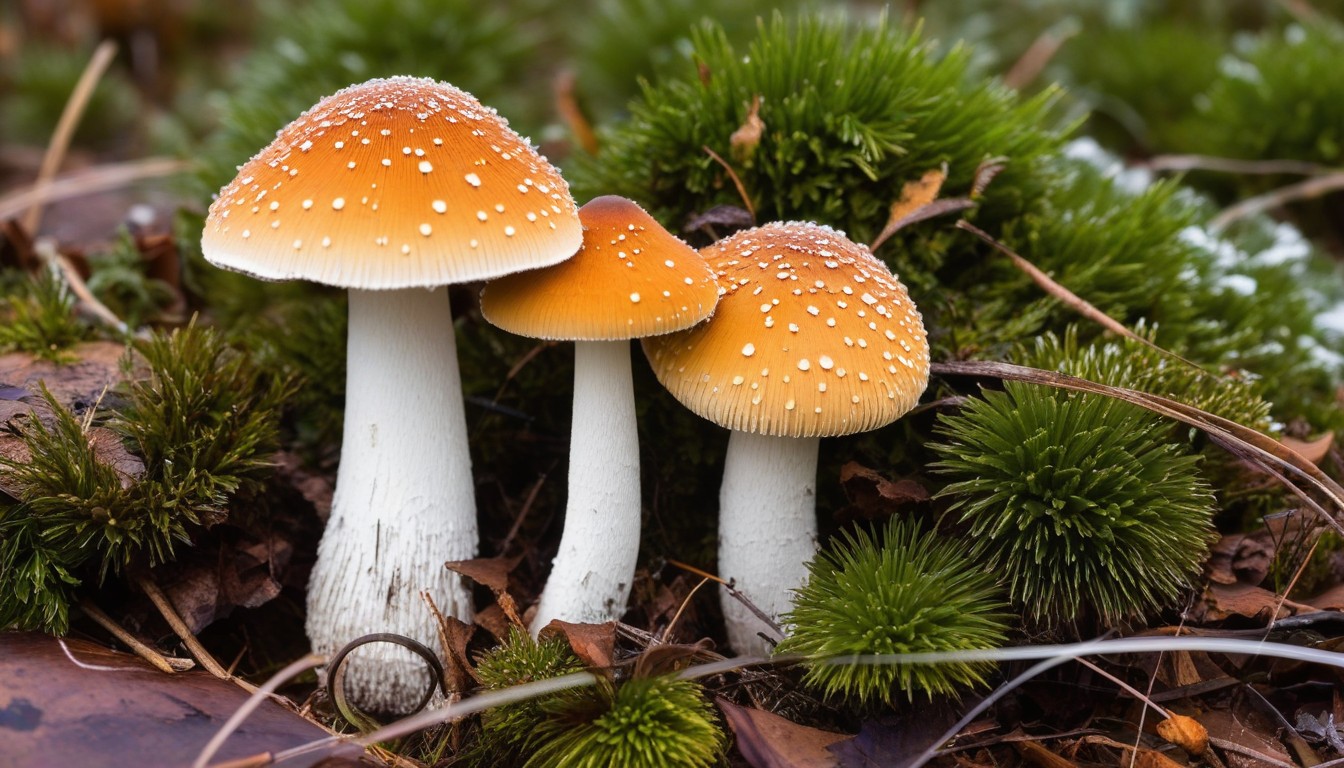
Foraging for mushrooms in winter can be a rewarding experience, but it’s crucial to know which mushrooms are safe to eat and which are not. Follow these steps to identify edible cold weather mushrooms:
Step 1: Mushroom Cap
Examine the cap of the mushroom. Edible cold weather mushrooms typically have smooth, dry, and firm caps with a distinct shape and color. Avoid mushrooms with slimy or wet caps.
Step 2: Gills and Pores
Check the gills or pores underneath the mushroom’s cap. Edible cold weather mushrooms usually have thin, closely spaced, and whitish gills or small, circular pores with a honeycomb-like surface. Avoid mushrooms with red or orange gills or pores.
Step 3: Mushroom Stem
Inspect the stem of the mushroom. Edible cold weather mushrooms typically have a firm, solid stem with no signs of decay or damage. Avoid mushrooms with hollow or bruised stems.
Step 4: Spore Print
Collect a spore print by leaving the cap of the mushroom on a sheet of paper overnight, gill or pore side down. The next day, examine the spore print for color. Edible cold weather mushrooms usually have white, cream, or light brown spore prints. Avoid mushrooms with dark or black spore prints.
Remember, when in doubt, throw it out. Stay safe when mushroom foraging and never consume a mushroom unless you are 100% certain of its identification.
Culinary Uses and Recipes for Cold Weather Mushrooms
Cold weather mushrooms don’t just add a unique flavor to your dishes, but are also rich in nutrients. Here are some culinary uses and recipes to get your taste buds tingling:
Culinary Uses
Cold weather mushrooms are versatile and can be used in a variety of dishes. Use them in soups, stews, sauces, omelets, and risottos. Their earthy flavor pairs well with meats, pasta, and vegetables. You can also grill or sauté them and add them to pizzas, tacos, and sandwiches for a delicious twist.
Recipes
|
Recipe |
Description |
|---|---|
|
Truffled Wild Mushroom Risotto |
This creamy dish uses a blend of cold weather mushroom varieties, including shiitake and oyster mushrooms, to create a rich, comforting meal. Topped with truffle oil, Parmesan cheese, and fresh parsley, it’s a perfect winter delight. |
|
Mushroom and Spinach Stuffed Chicken Breast |
A healthy and delicious main course, this dish uses a mix of chopped cold weather mushrooms, spinach, and cheese as a stuffing for chicken breasts. Serve it with a side of roasted veggies for a complete meal. |
|
Wild Mushroom Soup |
This hearty soup is the perfect comfort food for a cold winter day. It uses a blend of cold weather mushroom varieties, such as porcini and chanterelle, together with veggies, herbs, and cream to create a rich, flavorful broth. |
Get creative and experiment with different cold weather mushroom varieties in your recipes. You may find a new winter staple in your kitchen.
Medicinal Properties of Cold Weather Mushrooms
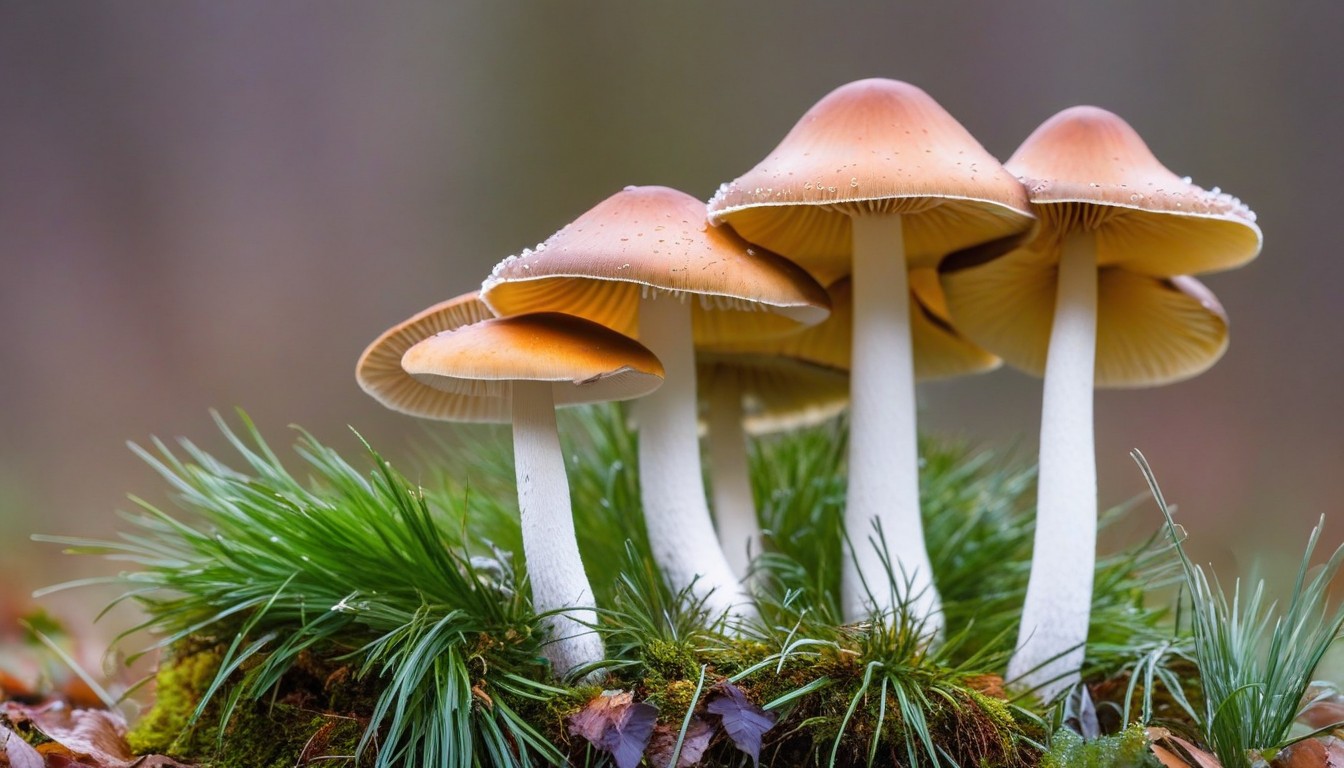
Did you know that cold weather mushrooms are more than just a tasty treat? They may also offer a range of potential health benefits. Below are some of the medicinal properties that these mushrooms possess:
|
Mushroom |
Medicinal Properties |
|---|---|
|
Chaga |
Antioxidant, anti-inflammatory, immune-boosting |
|
Cordyceps |
Energy-boosting, anti-inflammatory, immune-modulating |
|
Reishi |
Anti-inflammatory, antioxidant, immune-boosting |
|
Lion’s Mane |
Brain-boosting, anti-inflammatory, antioxidant |
These medicinal properties are attributed to the presence of active compounds such as beta-glucans, terpenoids, and polysaccharides in cold weather mushrooms. They have been studied for their potential anti-cancer, anti-viral, and anti-aging effects.
However, it’s important to note that not all cold weather mushrooms are edible, and some can be toxic. Always consult a qualified forager or mushroom expert before consuming any mushroom, especially for medicinal purposes.
Next, we’ll explore how to preserve and store these mushrooms to enjoy their flavors and potential health benefits throughout the year.
Preserving and Storing Cold Weather Mushrooms
Preserving and storing cold weather mushrooms is an excellent way to enjoy their flavors throughout the year. Here are some effective methods to make the most out of your foraging expeditions:
Drying
Drying is a popular preservation method for mushrooms, as it helps to extend their shelf life. To dry mushrooms, spread them out on a mesh or wire rack and place them in a well-ventilated area away from direct sunlight. Turn the mushrooms occasionally, and after a few days, they should be dry and brittle to the touch. Store the mushrooms in an airtight container in a cool, dry place.
Freezing
Freezing is another excellent preservation method that helps to retain the flavor and texture of mushrooms. Clean and slice the mushrooms before placing them in a single layer on a baking sheet. Freeze the mushroom slices for a few hours before transferring them to a freezer-safe container. Frozen mushrooms can last up to six months and are ideal for use in soups, stews, and other dishes.
Canning
Canning mushrooms is a great way to preserve them while retaining their flavor. Clean and prepare the mushrooms before packing them into sterilized jars. Add a pinch of salt and any desired seasonings before filling the jars with boiling water. Seal the jars and place them in a large pot of boiling water for several minutes. Canned mushrooms can last up to a year and are perfect for use in sauces, gravies, and other dishes.
With these preservation methods, you can enjoy the flavors of cold weather mushrooms all year round. Happy foraging!
Conclusion
Winter foraging for cold weather mushrooms is a thrilling and rewarding hobby that offers a unique perspective on the natural world. By braving the chill and exploring the winter forests, we can uncover a hidden world of fascinating fungi with diverse flavors, textures, and medicinal benefits.
With the guidance offered in this comprehensive winter foraging guide, you’ll be equipped to identify and harvest cold weather mushroom species, prepare them for culinary or medicinal use, and ultimately gain a deeper appreciation for the natural environment.
So bundle up, grab your foraging gear, and venture into the winter woods to experience the wonders of cold weather mushroom foraging. Happy exploring!
FAQ
Why is winter foraging for mushrooms beneficial?
Winter foraging for mushrooms can be beneficial because colder temperatures can enhance the flavor and texture of certain mushroom species. Additionally, there is less competition from other foragers during the winter months, increasing your chances of finding unique and delicious mushrooms.
What are some common cold weather mushroom species?
Some common cold weather mushroom species include the winter chanterelle, velvet foot, oyster mushroom, shaggy mane, and turkey tail. These mushrooms are adapted to cold weather conditions and can often be found during the winter months.
Where can I find cold weather mushrooms in winter?
Cold weather mushrooms can be found in a variety of habitats, including coniferous forests, woodlands, and even urban areas. Look for them near decaying logs, tree stumps, and fallen leaves. It’s important to note that specific mushroom species may have different habitat preferences, so it’s recommended to research their requirements beforehand.
What tools and gear do I need for winter mushroom foraging?
Essential tools and gear for winter mushroom foraging include a basket or foraging bag to collect the mushrooms, gloves to protect your hands from the cold, a sharp knife for clean and precise harvesting, and a field guide or mushroom identification app to help you identify the different species you come across.
Are there any safety precautions I should take when foraging for mushrooms in winter?
Yes, there are several safety precautions you should take when foraging for mushrooms in winter. It’s important to be knowledgeable about mushroom identification and only consume mushrooms that you are certain are edible. Additionally, dress appropriately for the weather, stay hydrated, and let someone know about your foraging plans in case of emergencies.
How can I identify edible cold weather mushrooms?
To identify edible cold weather mushrooms, it is essential to study their key features. This includes observing the cap shape, color, and texture, examining the stem, gills, or pores, and checking for any specific odor or spore print. Consulting a reliable field guide or enlisting the help of an experienced forager can also greatly assist in the identification process.
What are some culinary uses and recipes for cold weather mushrooms?
Cold weather mushrooms can be used in a variety of culinary dishes. They can be sautéed, added to soups and stews, incorporated into risottos or pasta dishes, or even used as a topping for pizzas and omelets. Some popular recipes include mushroom risotto, mushroom soup, and mushroom and spinach fettuccine.
Do cold weather mushrooms have any medicinal properties?
Yes, some cold weather mushrooms have been found to possess medicinal properties. For example, the turkey tail mushroom is known for its immune-boosting properties and the reishi mushroom is believed to have antioxidant and anti-inflammatory effects. However, it’s important to consult a healthcare professional before using mushrooms for medicinal purposes.
How can I preserve and store cold weather mushrooms?
Cold weather mushrooms can be preserved and stored in a variety of ways. You can dry them by slicing and placing them in a food dehydrator or oven, freeze them by blanching and storing in airtight containers, or can them in vinegar or oil. Proper storage in a cool, dry place is essential to maintain their flavor and quality.

